Fujifilm X-Summit Fall 2022 Q&A: X-H2 secrets, XF56mm f/1.2 R WR background and more
posted Sunday, October 23, 2022 at 4:20 PM EDT

When I interviewed Fujifilm executives at their headquarters in Omiya, Japan back in July, there were a number of upcoming announcements that they couldn’t yet talk about, and they suggested I drop by their X-Summit/Fujikina event in New York City in early September.
I did just that, and it turned out to be a pretty significant event, with announcements including the X-H2 high-resolution (40 megapixel) camera body with 20fps shooting, video up to 8K/30p, electronic shutter speeds as high as 1/180,000 second and much more) a new version of their already-excellent 56mm f/1.2 lens, a surprisingly compact and lightweight ultra-wide 20-35mm (35mm equivalent 15.8-27.7mm) zoom lens for the GF mount, and the surprise announcement of a 110mm tilt/shift lens, also for the GF line.
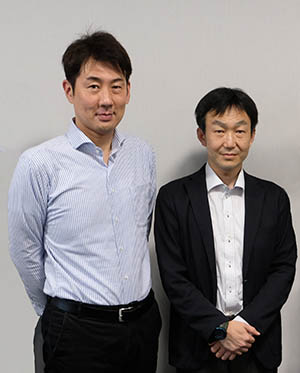
I met with Yujiro Igarashi, Divisional Manager, Professional Imaging Group, Imaging Solutions Division, and Jun Watanabe, Product Planning Manager, Product Planning Group, Professional Imaging Group, Imaging Solutions Division. Igarashi-san has responsibility for Fujifilm’s global camera and lens business, including the Fujinon broadcast lenses. Watanabe-san is responsible for product planning, so his group was responsible for the design of the new X-H2 camera.
I had a lot of questions about the X-H2 and new 56mm lens in particular, but we also talked some about the new 20-35mm and 110mm tilt/shift lenses as well.
Read on for all the details, and leave any thoughts or questions you might have in the comments below. I’ll make a point of checking the comments regularly over the next week or so, and will answer any questions you might have to the extent of my knowledge.
(In the below, in some places I’ve summarized the discussion for the sake of clarity, while in others I’ve quoted their words directly. My summaries refer to Fujifilm in the third-person, while the direct quotes are first-person and set off in quotation marks.)
Signal/noise ratio and dynamic range of the X-H2 vs the X-H2S
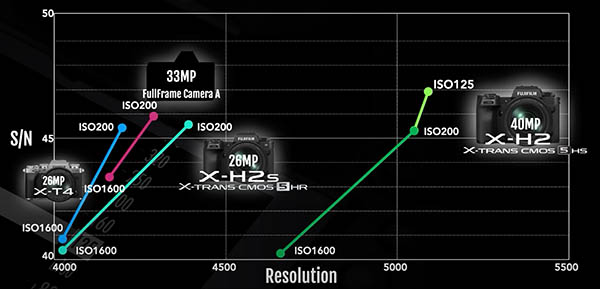
RDE: The lower base ISO of 125 seems like a significant change. It’s impressive enough that you managed to achieve only slightly lower SNR at ISO 200 than with the X-H2S, but the jump in SNR when going to ISO 125 is pretty dramatic. Can you say anything about how this is accomplished in the sensor? (Does it mean a deeper structure for the photodiode? Some other change in the pixel cell structure?)
Answer: "Even though the pixel pitch is narrower than previous sensors, by rearranging the pixel layout (the amplifier circuitry, etc), and using a wider structure for the photodiode, the pixel can now hold more electrons. This means it can accumulate more light before saturating, so we could achieve the ISO 125 capability. These hardware changes also helped keep the dynamic range of still images at about the same level, despite the physically smaller pixels."
What’s the secret to the 1/180,000 second shutter speed?
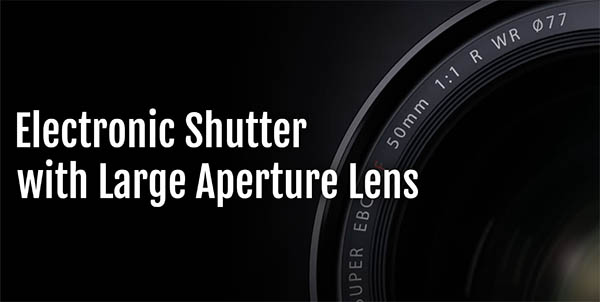
RDE: Electronic shutter speeds extending as high as 1/180,000(!) are astonishing. As you pointed out, this is going to be a great feature for people wanting to exploit the super-wide f/1.2 aperture of the 56mm under brighter lighting. What’s the secret to achieving that? What’s the limiting factor for short exposures with electronic shutter, such that this is the first time you’ve managed to achieve this? (Is it a matter of shutter-signal propagation across the sensor’s surface?)
Answer: The new sensor gives much more precision in setting the electronic shutter exposure time. That more precise control is what enabled the extremely high shutter speeds. Specifically, they said: “Until now, the accuracy of exposure time control in the ultrahigh-speed range has been low, and control in 1/3-step increments has been difficult. This time, as a function of the new sensor, we were able to improve the ability to precisely control the timing of reset and readout in the exposure time, and realized an electronic shutter speed of 1/180,000 sec. at the fastest.”
I was curious what it was about the new sensor that led to the much more precise timing control. Is there some more basic architectural change in either the pixel structure or the support circuitry in the array that enabled the more precise control, or is it something different altogether? My first thought was that maybe it had to do with getting the shutter signal to propagate across the array faster, but as I’ve thought about it more, I suspect that what they’ve done is incorporated some sort of more sophisticated timing circuitry onto the sensor chip itself. I of course know nothing about either their current or former sensor designs, but it strikes me that they could have done something like putting a higher-frequency clock oscillator and logic circuitry onto the sensor (or the stacked chip) itself, rather than sending the shutter signal from the main processor directly. This is all blue-sky speculation, but I strongly suspect that the solution involved putting timing circuitry in the sensor stack itself, in order to achieve the dramatically improved precision they spoke of.
HR pixel-shift mode images must be assembled on a computer?
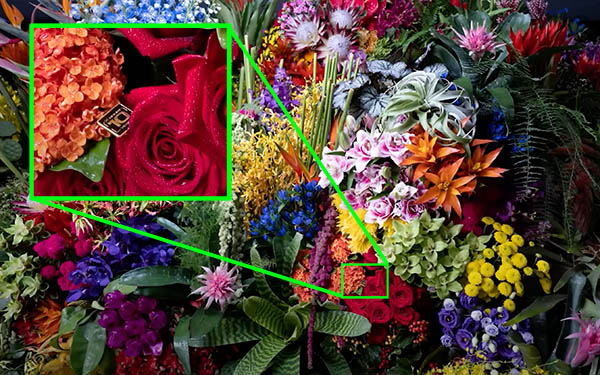
RDE: Pixel-shift high res seems to work very well (I was impressed by how far Jun-san could zoom in on the sample image he showed in the briefing, with pixel-level sharpness in the image.) Jun showed it being driven from a PC. I assume that the camera can capture HR images by itself? Do you need to assemble the high res image on a computer, or can the camera also do that itself?
Answer: "Yes, the camera can capture the 20 sets of images on its own, but it’s up to a software application on a PC to stitch them together; the camera can’t do the stitching internally."
This makes sense, the micro-alignment of the 20 separate exposures takes a lot of computation. The results are quite impressive though. During the new-product briefing Jun Watanabe showed an image taken using the X-H2’s multi-shot high-resolution mode (video screenshots of it shown above), and I was surprised that it was as sharp as it was at the pixel level. The lens of course has something to do with this, and Fujifilm’s design philosophy for lenses has always been to aim for a single point of maximum sharpness, rather than a slightly softer characteristic at optimal focus that extends over a finite range of travel of the focus element (a more common approach among lens designers). I first learned of this in an interview at CP+ in Japan many years ago, but couldn’t locate the reference as I was writing this. A broader point of focus relaxes the demands on the AF system, but results in less crispness than a design that aims for optimal focus to occur at a single point. Fujifilm’s approach is well-suited to the modern era in which the image sensor itself is used for focus determination. In SLRs, where the AF sensor was separate from the image sensor, less-critical optimal focus helped to accommodate microscopic misalignments between the AF and imaging sensors.
Does the X-H2 use the same processor as the X-H2S or is it different?
The X-H2 uses the X-Processor 5. Is this the same chip as in the X-H2S, or is it new?
Answer: It’s the same.
How did they manage a blackout-free EVF without a stacked sensor?
RDE: The X-H2 has 120fps blackout free live view: How did you manage that without a stacked sensor? Is the dataflow architecture the same as in the X-H2S? (In the X-H2S, the entire sensor is scanned and fully read out at 120fps. The processor then outputs data separately for the live view/viewfinder and still-capture functions. The X-H2’s sensor isn’t a stacked design, so its readout is going to be slower than that of the X-H2S. If they’re not scanning the full array at 120fps, how have they managed to produce a blackout-free Live View that updates at 120fps?)
Answer: "The X-H2S can display live-view images at 120 fps because the live-view images are skipped-reading, on the other hand the X-H2S can display live-view images at 120 fps with full pixel count."
Ah, this makes sense: I believe that they mean that the X-H2 skips pixels for its live-view display. Since both the EVF and rear-panel LED are lower-resolution than the sensor itself, not all of the sensor pixels are required to create the live-view image.
Why no 8K/60p option?
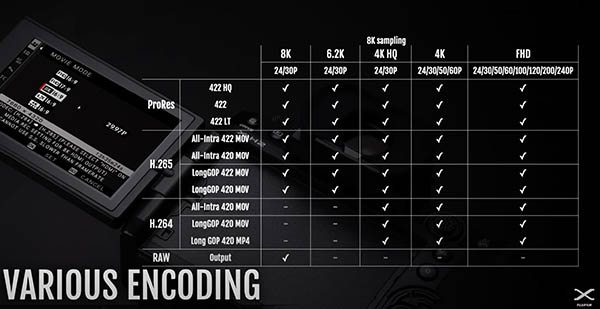
RDE: 8K/30fps is impressive, but I’m curious why you can’t do 8K/60, unless you can’t read out the display that fast. (Or is it a processor limitation? - The EVF updates at 120fps, so why not video that fast?)
Answer: "The frame rate is limited to 8K/30P by the sensor’s performance limits (readout speed)."
Again, this makes sense: The live view display skips pixels to achieve the 120fps refresh rate. This obviously isn’t an option for 8K video.
Is the frame cropped when shooting stills at 20fps?
RDE: The camera’s spec says it can do 20fps with electronic shutter, but includes the note (1.29x) after it. Does that mean that the 20fps frames are cropped by 1.29x from the full sensor frame?
Answer: "Yes, at 20fps, the camera shoots 24 megapixel images, with a 1.29x crop factor relative to the full frame."
It might seem odd that the camera can capture 8K video using the full sensor resolution at 30fps, but it has to crop down to 24 megapixels to shoot stills at only 20fps. The difference is the result of the very different image processing and data pathways that are used for still images vs videos. One difference between the two types of capture is that video compression and encoding is handled by dedicated, highly optimized hardware, which uses keyframes and frame-to-frame differences to greatly reduce the amount of data being dealt with early in the processing chain. Still capture has to treat each frame as an entirely separate image, so it isn’t able to take advantage of the large parts of the images that don’t change from one shot to the next to gain efficiency. That said, twenty 24-megapixel frames a second would have been over-the-top performance for a "sports" camera just a few years ago.
Does digital image stabilization improve when shooting cropped video?
RDE: Does using a cropped video mode (4K or FHD) let the camera’s IS system compensate better for large motion, such as when walking with it handheld? (My thought here is that digital image stabilization should have more sensor area to work with when it’s only using 50% of the sensor area, so it should be able to compensate for more camera motion than the normal IBIS.)
Answer: When doing digital image stabilization, the X-H2 crops the sensor by 10%, then expands the video back out to regain the full image size. While it might be possible to achieve more compensation in cropped-video mode, they don’t currently do it.
Thinking about this question afterwards, I realized that digital image stabilization might degrade the image quality somewhat when using 1:1 cropped video. Their normal approach of cropping just 10% of the image and then expanding the result back out again effectively gives them the ability to make sub-pixel corrections for camera movement, producing much smoother video.
Shooting 4K video using the full sensor, there are slightly more than two sensor pixels vertically and horizontally for each pixel in the final output. (2x2, meaning a total of 4 input pixels for each output one.) Cropping by 10% means there are slightly fewer than two sensor pixels in each direction for each pixel in the output. This isn't a large difference though, so if the camera shifts the readout location on the sensor’s surface by one pixel, it only amounts to a bit more than half a pixel in the output image. This ability to control the readout position in roughly half-pixel increments makes for very smooth output video.
All that said, though, it’s not clear whether or not it might be possible to add a special digital image stabilization mode in the future, that could take advantage of the greater margin that cropped 4K video would provide.
Even lenses released in 2021 were designed with the 40MP sensor in mind!
This wasn’t part of my questions, but I thought it was worth mentioning here for those who might not have watched the rollout event. It turns out that Fujifilm has been planning for the 40 megapixel sensor for some years now. The XF 18/1.4, 23/1.4 and 33/1.4 lenses released in 2021 were all designed to deliver the higher resolution demanded by the 40 megapixel imager. Given that it can take 2-3 years for a new lens design to make it from initial concept to a shipping product, Fujifilm has been planning for the advent of the X-H2’s sensor for quite a while now.
Was the 70cm minimum focus of the original 56/1.2 limited by image sharpness?
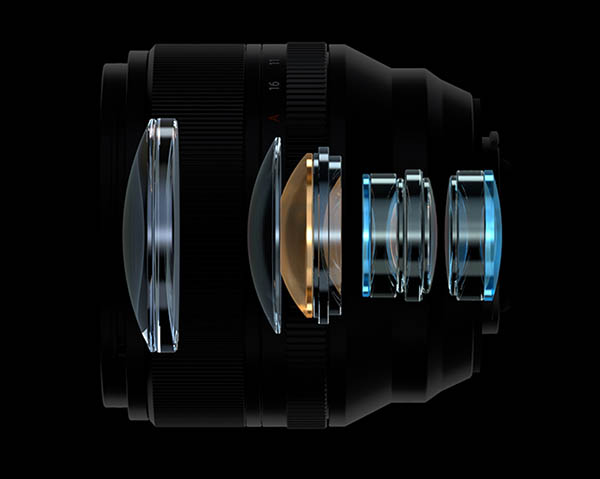
RDE: The press release noted that the MOD (Minimum Object Distance) was reduced to 50cm due to “improved resolving capability at minimum object distance (MOD)" Was the previous version limited to 70cm because it would have just gotten too soft or had too-high aberrations at closer focal distances?
Answer: Yes, it would have been physically possible to let the original 56/1.2 lens focus closer, but if they’d done so, it wouldn’t have delivered the level of sharpness they feel that a Fujifilm lens should provide.
A quick side note here, on the term “minimum object distance”. I’m more accustomed to hearing the term “minimum focal distance”, so I Googled MOD and found conflicting definitions for it. Some sources say that MOD refers to the minimum distance between the subject and the front element of a lens, vs minimum focal distance which refers to the minimum distance from the subject to the focal plane. Other sources said the two terms are interchangeable. When I asked the Fujifilm folks about it, they said that they treat the two terms as synonymous. - So the minimum focal distance for the new 56/1.2 is 50 cm from the camera’s focal plane to the subject.
What led to the improved bokeh of the new 56/1.2?
RDE: There was a lot of emphasis in the presentation on the bokeh of the new lens. How much of the optical design (the basic arrangement of elements) was driven by a quest for better bokeh?
Answer: The new optical design might have had some effect on the bokeh, but the main goal of the new design approach was to reduce aberrations and increase maximum sharpness. The part of the design that was specifically aimed at bokeh was the 11-blade aperture.
I asked this question because I know there’s a lot more to bokeh appearance than just how circular the aperture is. Even with a perfectly circular aperture, you can still get things like bright-line or onion-ring bokeh or other unappealing characteristics depending on the optical design and fabrication of the elements. I suspect that the designers of the new 56/1.2 gave at least some thought to bokeh appearance when they were coming up with the optical formula, but that apparently wasn’t the primary motivation for the new design.
(The bokeh really does look gorgeous, by the way; it’s soft, smooth and featureless.)
Does the 56/1.2 II’s aperture move along with the focus elements?
RDE: The “focus group” in the new 56mm f/1.2 actually seems to be two separate lens groups, one in front of and one behind the aperture. Do these move as a single unit, or are they separately driven? If the former, does that mean that the aperture assembly moves along with them? That must add even more mass…
Answer: "The focus lens groups work in unison, including the aperture. These lenses contribute greatly to improving the minimum focusing distance and image quality at close range."
Wow, a 120 gram focus group, but a change to DC motors. What’s AF speed like?
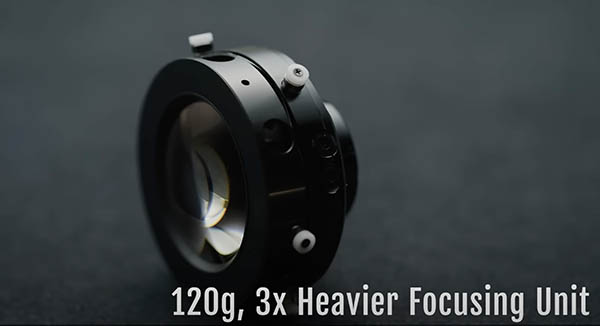
RDE: I was surprised to see that the focus group in the new 56/1.2 weighs 120 grams, that seems crazy-heavy for a focus group! But I also see that you’re using DC motors. Are DC motors more powerful than other approaches? I guess the bottom line is focus speed; can you tell me how the new 56/1.2 compares to the previous version, or to other lenses generally?
Answer: "As for the AF speed, it is equivalent to the current lens. Although the weight of the lens group is considerably heavier, the same performance has been achieved by increasing the torque of the DC motor and improving the lens drive algorithm."
From my conversations with lens designers over the years, it appears to be difficult to maintain high image quality at short subject distances. The solution seems to be much more elaborate focus units with more lens elements in them. This is why macro lenses tend to be slow-focusing; the focus motor has a lot of glass to move around to focus the lens.
I’ve become so accustomed to hearing about linear motors, electromagnetic actuators, stepper motors and the like that when they said “DC Motor”, I was thinking it was something new or different. It turns out this is just an old-fashioned miniature DC motor with a spinning shaft coupled to the focus group via gearing. This is the way most AF lenses were built from the beginning, until the advent of things like ultrasonic motors and other newer actuator technology. Thanks to modern motor tech though, DC motors can pack a heck of a lot of torque for their size, and more sophisticated electronics and firmware lets Fujifilm drive the motor quickly and accurately.
Will we be seeing more WR (Water Resistant) lenses going forward?
RDE: I also noticed the marketing materials for this lens also made a point of it being weather resistant. Is that a feature we’re going to be seeing more of in your lenses in the future?
Answer: "Generally speaking, all our modern lenses are weather resistant. The first generation weren’t, but at some point they we decided to make it a standard feature, so any recent lenses are built that way, and future ones will be also."
What’s the secret to the 20-35mm’s secret, being so lightweight and compact?
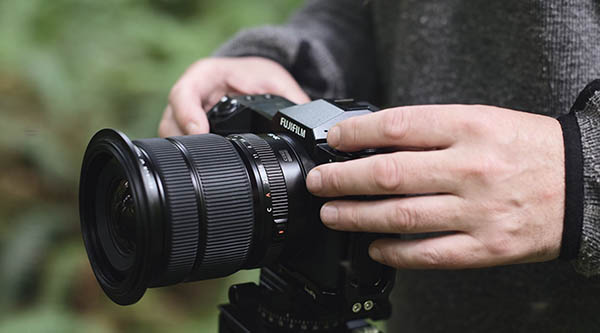
RDE: The GF 20-35mm f/4 size and specs are amazing: It’s actually lighter than the 23mm f/4 and almost the same size (1mm smaller diameter, only ~9% longer, and less than 10% more expensive. What was the trick to be able to make it so compact? I think I saw in the presentation that it uses an unusually complex single cam to move the elements, where there’d usually be two cams. Was that an important part of making it so compact?
Answer: "The most important aspect was the application of the same small-size optical system concept as in the GF35-70mm lens."
"There were a range of things that helped. First, we chose an internal-zoom design, to make it easier to carry. That brought its own constraints though, so we had to work hard on both the optical and mechanical design. Optically, we used a lot of aspherics and ED glass, with three aspherical lenses, three ED lenses and one aspherical ED element. Nano-AR coatings and internal light masks were used to minimize flare and ghosting. Perhaps the biggest factor in the compact size of the lens is that it uses a single mechanical cam to move all the lens elements as you turn the zoom ring. The barrel of the cam has two different diameters, and normally it would have required two separate cam assemblies, but the engineers managed to combine them into a single more complex cam that handles all the zoom movements by itself. This reduced both the lens diameter and its weight. To further help with the weight, we used four different materials in the body of the lens (magnesium, aluminum, brass and plastic parts), letting the engineers make the optimum choice of weight, rigidity, cost and manufacturability for each component."
A quick side note about materials used in lens bodies. You might assume that the best thing to do would be to just machine everything out of aluminum, but it turns out “all metal” doesn’t necessarily mean “better”. Modern structural plastics have close to the same strength per weight as aluminum does, and can be molded to dimensional accuracies (a few thousandths of a millimeter) that would be difficult and very expensive to maintain when machining aluminum at high production levels. By contrast, once you have the molds made, completely identical structural plastic parts can be cranked out in high volumes very cheaply. - So structural plastic parts can actually be more precise than metal ones
Looking in the opposite direction, Magnesium’s light weight and extreme rigidity relative to aluminum or plastic make it a great material for shaving weight and size from precision assemblies, but it’s quite expensive and tricky to machine. Used strategically, though, it’s amazing how much it can stiffen up an assembly while at the same time reducing its weight.
Finally, brass is easy to machine, and its mechanical properties make it virtually ideal for use in lens flanges. It also takes hard chrome plating very well, providing a smooth and highly wear-resistant surface for parts that have to slide against each other, as is the case with lens mounts and flanges.
Lens manufacturing is an intricate and fascinating process; if you’d like to learn more about it, check out my tour of Sigma’s Aizu factory, and a follow-up piece when they added magnesium machining to their capabilities.
The 110mm tilt-shift was a big surprise, what’s the story with that?
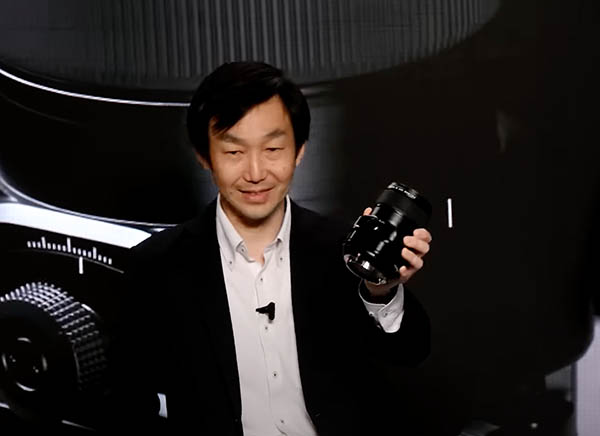
RDE: I was very surprised to see you announce a 110mm tilt-shift lens for the GF mount; you’d shown a 30mm tilt/shift on the lens roadmap for a little while, but never a 110mm. How did that come about? Was the 110mm a more recent decision and more quickly designed, so you just launched it without talking about it beforehand?
Answer: "When we were looking at the market and the different genres or use cases for tilt/shift lenses, we found that there was a need for a longer focal length as well. The 30mm was good for things like architectural photography, but the commercial market needed something longer for things like fashion shoots and other studio work." (30mm on the GFX platform has the angle of view of a 23.7mm lens on a 35mm body, while a 110mm is equivalent to an 86.9mm lens on a 35mm body.)
Apparently they were considering both lenses from the start and began designing them both at around the same time, but for whatever reason they weren’t sure whether they’d actually be making the 110mm or not until sometime after their plans for the 30mm had solidified. In the end, after some initial delay, they arrived at the final design of the 110mm fairly quickly, such that they were able to announce it at the Fall X-Summit.
(Meanwhile, the release date for the 30mm still hasn’t been set - or they’re simply not disclosing it yet.)
Summary
As always, it was an interesting conversation, and many thanks to Igarashi-san and Watanabe-san for taking the time to talk to me. The X-H2 looks like a great camera that’ll fit the needs of many shooters. In my own photography, I’m much more interested in resolution than high shooting speeds, although the X-H2’s 20fps/24 megapixel mode is still a lot of resolution and would have been considered state of the art for a “sports” camera only a few years ago. While the X-H2S will be a no-brainer for sports and perhaps wildlife photographers, I suspect that the X-H2 will ultimately outsell it. Regardless of which model is more popular, the pair leaves Fujifilm with an excellent position in the high-end APS-C market. At the same time, their ever-growing medium-format GFX line includes 5 bodies, 15 lenses (including the 110mm tilt/shift, which doesn’t appear on their website yet) and a teleconverter. Combine all that with Fujifilm’s solid AF performance, their superb optics and Fuji-only features like film simulations, and they seem poised for success for years to come.